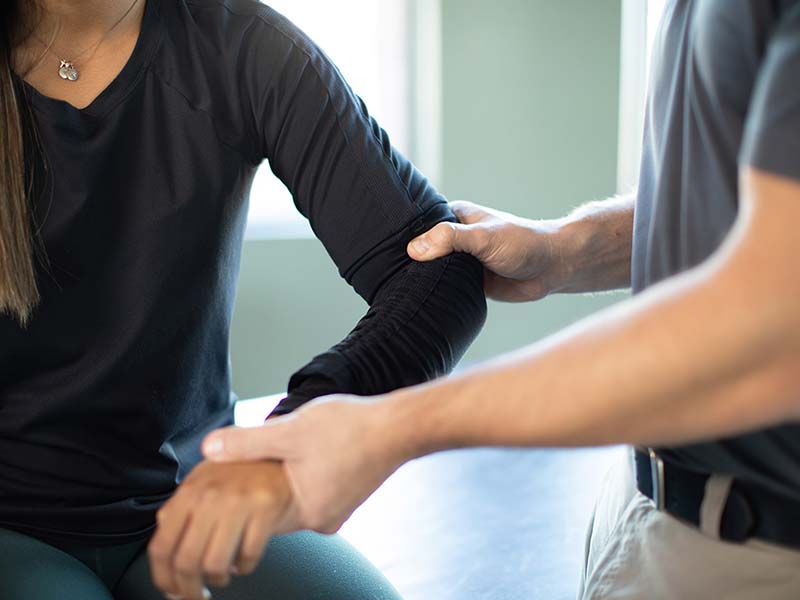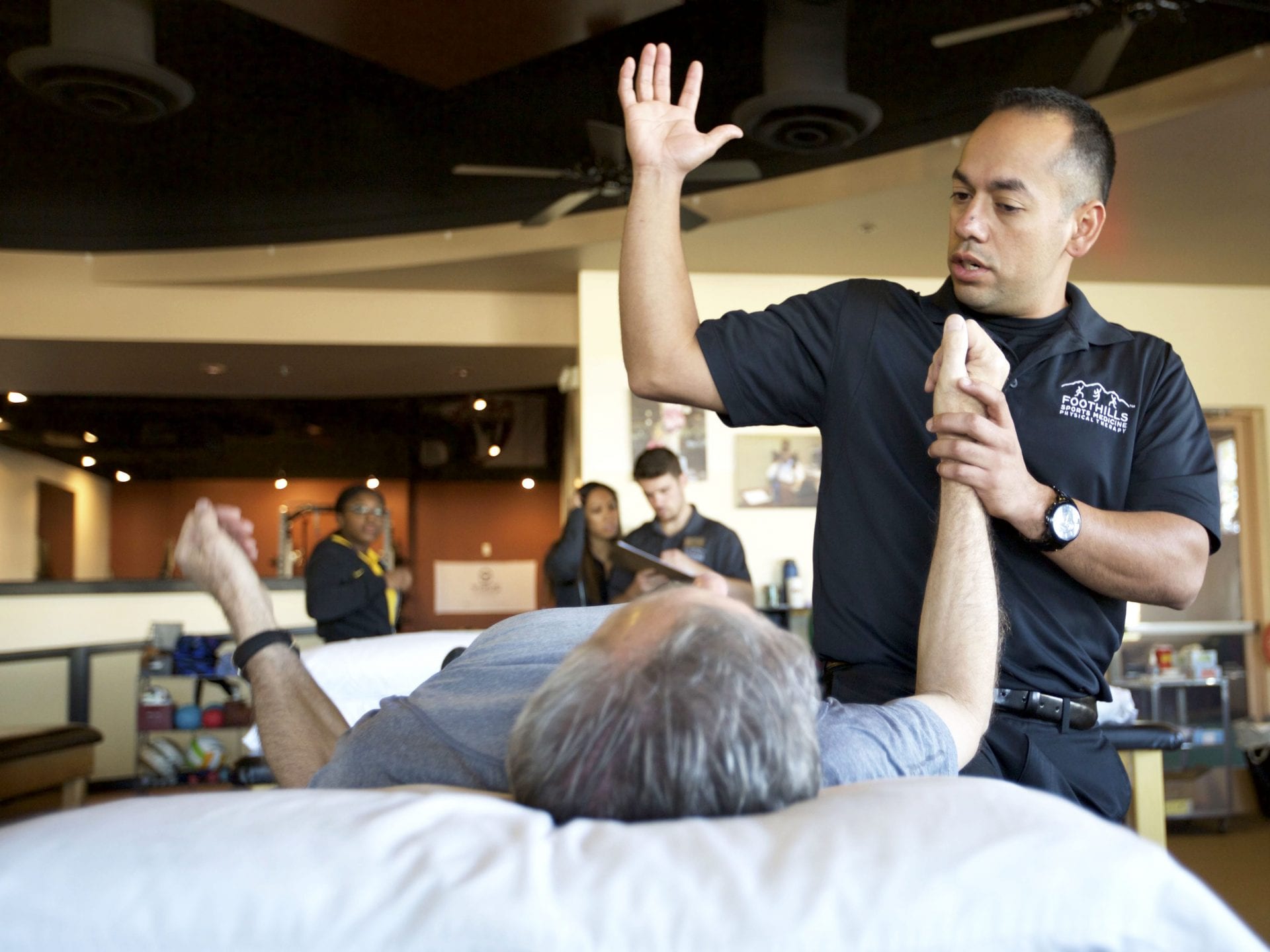by Ethan Anderson PT, DPT, ATC | Peoria
Simply put, tennis elbow is a repetitive strain or traumatic injury to the tendons around the outside of the elbow. Every year in the U.S., it affects 1-3% of the population between the ages of 20 and 50. However, despite its name, actual tennis players only make up about 5% of those affected; it is more common among non-athletes and weekend warriors. Typically, when tennis elbow occurs in non-athletes, it is due to a single injury inflicted either during short bouts of heavy lifting or a sudden impact to the area. However, repetitive stress, whether at work or at play, can also play a large role. But what happens to the tendon itself?
Tendons are made up of collagen fibers, bundled together, that attach muscles to the bone; in this case, the wrist extensors attach muscle to the bones in the elbow. This tendon is then wrapped in a protective covering that allows it to glide smoothly within the body. The injury occurs when something interrupts the way the tendon moves. Small injuries, or micro-traumas, occur when the stress on the tendon is more than the tendon is capable of handling. Tennis elbow develops when micro-traumas to this tendon aren’t allowed to heal fully before being injured again.
Is Inflammation a Bad Thing?
The body’s natural healing response begins as soon as an injury occurs. This process is known as inflammation. There is a common misconception that inflammation is a bad thing, but only when it goes on longer than necessary or gets out of control. Good blood flow is necessary for the inflammatory process to properly aid in injury recovery. Blood brings all of the body’s healing elements to the injured area. However, the blood supply to the tendons in the elbow is relatively low, leading to longer healing times.
The most effective means of treating tennis elbow, or any tendon injury, is through conservative treatment by a registered physical therapist. Physical therapy directs the body’s healing mechanisms to perform to their highest potential, using treatments such as gentle stretching, manual therapy, bracing, and ice.
Gentle stretching, exercise, and manual therapy increase blood flow to the injured area while decreasing pain. Bracing eliminates some of the physical stress from the area and allows the tendons to rest. Ice will help control the inflammation and aid in pain relief.
To ensure that the injury won’t happen again, a registered physical therapist will work to increase the flexibility, strength, and endurance of the injured muscles and tendons. The goal is to tailor a stretching and exercise program to your injury and level of discomfort that will return, and improve, the functioning of your tendon.
Every person and injury is different; it takes the knowledge and skill of a physical therapist to properly treat repetitive strain and trauma injuries like tennis elbow. So if you happen to suffer from tennis elbow, golfer’s elbow, or any other sprain or strain have no fear. Come see us for an initial assessment, along with some hard work, and a skilled hand, you can return to your life without pain.





